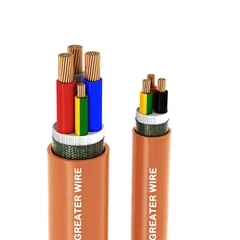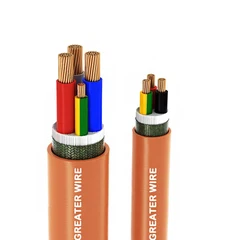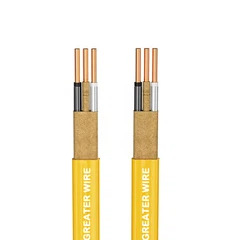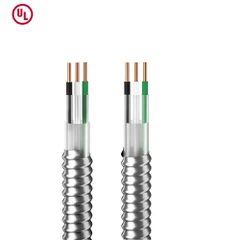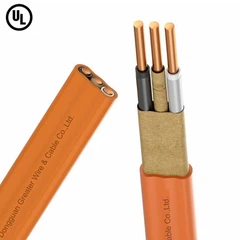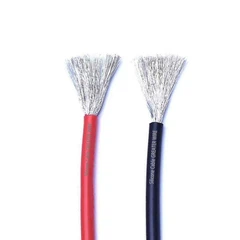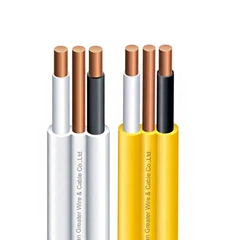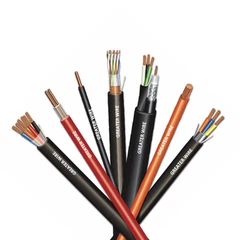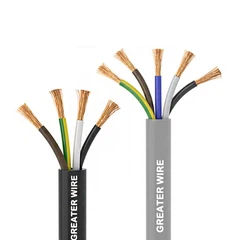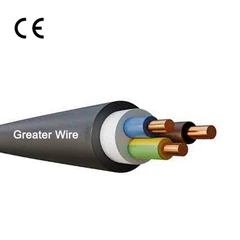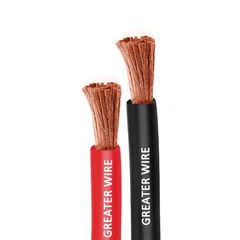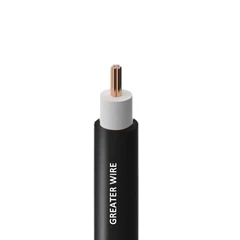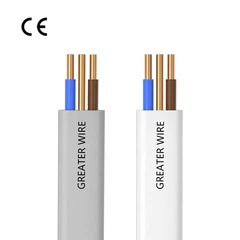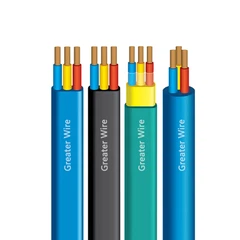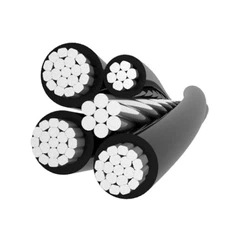In modern electrical systems, selecting the right type of wiring is essential for safety, efficiency, and long-term reliability. Among the many types of wires used in industrial, commercial, and household applications, Hook-up wire and control cable are two fundamental categories. While they may appear similar to the untrained eye, their construction, applications, and performance requirements differ significantly. Understanding these differences is critical for engineers, electricians, and procurement specialists to ensure that systems operate safely and effectively.
Understanding Hook-up Wire
Hook-up wire is a single insulated conductor designed for internal wiring within devices, machinery, and control panels. Its primary focus is on flexibility, compact routing, and precision connections. The conductor is generally made from high-purity copper, either solid for rigidity or stranded for flexibility. Stranded conductors are ideal in applications where movement, vibration, or repeated bending occurs, such as in robotic arms, automotive harnesses, and industrial machinery. Solid conductors are more suited for stationary connections, such as printed circuit boards, terminal blocks, or control panels.
The insulation around Hook-up wire is equally important. It provides electrical isolation, thermal protection, chemical resistance, and mechanical durability. Common insulation materials include PVC, Silicone Rubber, PTFE (Teflon), and XLPE. PVC is cost-effective and flame-retardant, suitable for standard indoor electronics. Silicone insulation maintains flexibility even at high temperatures, making it ideal for industrial equipment or LED lighting systems. PTFE offers chemical resistance, high-temperature tolerance, and flame-retardant properties, making it suitable for aerospace, medical devices, and high-performance electronics. XLPE provides both durability and flame resistance for demanding industrial or automotive applications. Hook-up wires are often color-coded, facilitating easier identification and maintenance within complex systems.
By combining a high-quality conductor with durable insulation, Hook-up wire ensures reliable, safe, and versatile connections, forming the backbone of internal device wiring.

Understanding Control Cable
Control cable, in contrast, is designed for transmitting signals and control commands between machinery, equipment, or electrical panels. While Hook-up wire focuses on internal device connections, control cables are typically used for interconnecting devices over short to medium distances within industrial, commercial, and sometimes outdoor environments.
Control cables generally consist of multiple insulated conductors twisted or cabled together, often with additional shielding to reduce electromagnetic interference (EMI). They may have PVC, XLPE, or thermoplastic elastomer (TPE) insulation and are sometimes armored for mechanical protection. The design of control cables emphasizes signal integrity, flexibility, and durability, enabling reliable control of motors, sensors, actuators, and instrumentation systems.
Applications of control cables include industrial automation systems, factory machinery, conveyor systems, robotic lines, and building management systems, where signals must be transmitted accurately and safely over distances between panels and devices. Control cables can also handle higher voltages and currents than typical Hook-up wires, providing mechanical and thermal robustness to meet demanding industrial standards.
Key Differences Between Hook-up Wire and Control Cable
Though both Hook-up wire and control cable serve as insulated conductors, there are clear distinctions:
1.Purpose and Design: Hook-up wire is intended for internal wiring inside devices, with emphasis on compact routing and flexibility. Control cable is designed for interconnecting devices and transmitting control signals, often incorporating multiple conductors and shielding for EMI protection.
2.Construction: Hook-up wire is typically a single conductor, while control cables often consist of multiple twisted or cabled conductors, sometimes with shielding or armoring.
3.Application Environment: Hook-up wires are mostly used in internal, protected environments such as circuit boards, control panels, or internal machinery wiring. Control cables are used in industrial or commercial environments, exposed to vibrations, mechanical stress, and sometimes limited outdoor conditions.
4.Voltage and Current Ratings: Control cables are generally rated for higher voltages and currents, making them suitable for driving motors or transmitting signals across machinery, whereas Hook-up wire is often rated for lower voltage applications inside devices.
These differences are crucial for engineers to consider when specifying wiring for projects, as selecting the wrong wire type can compromise system safety, reliability, and regulatory compliance.
Applications of Hook-up Wire
Hook-up wire is widely used in numerous industries and applications. In household appliances, it connects internal components such as motors, switches, and sensors in devices like washing machines, refrigerators, and microwave ovens. In industrial machinery, silicone or XLPE Hook-up wires handle repetitive motion, high temperatures, and chemical exposure in robotic arms, conveyor systems, and CNC machines. Automotive applications leverage Hook-up wire for wiring harnesses, engine compartments, and infotainment systems, where vibration resistance and flexibility are critical. In medical devices, PTFE or silicone wires provide chemical resistance, sterilization safety, and flame-retardant performance. Even in aerospace and defense, specialized Hook-up wires ensure reliable connections in critical control systems.
Applications of Control Cable
Control cables are essential for industrial automation, process control, and instrumentation systems. They transmit signals from control panels to motors, sensors, actuators, and switches, ensuring accurate operation of machines and devices. Common applications include:
- Industrial Automation: Robotic arms, conveyor systems, and automated assembly lines rely on control cables for precise command and signal transmission.
- Building Management Systems: HVAC control, security systems, and lighting controls require control cables to maintain consistent performance.
- Power Distribution and Control Panels: Control cables transmit signals between circuit breakers, relays, and control devices in medium-voltage panels.
Control cables are engineered for signal integrity, flexibility, and mechanical protection, making them indispensable for safe and reliable operation in demanding industrial environments.
Selecting the Right Wire
Choosing between Hook-up wire and control cable-and determining the right specifications-requires careful consideration of multiple factors:
- Electrical Requirements: Voltage rating, current-carrying capacity, and signal integrity must align with application needs.
- Environmental Conditions: Temperature, chemical exposure, vibration, and mechanical stress influence insulation type and thickness.
- Flexibility and Movement: Stranded conductors and flexible insulation are preferred for moving components, while stationary wiring may utilize solid conductors.
- Certifications and Compliance: Ensure that wires meet relevant standards such as UL, CSA, CE, or IEC, guaranteeing flame resistance, electrical safety, and environmental compliance.
By evaluating these factors, engineers can select wires that provide optimal performance, safety, and durability for both internal device connections and external inter-device control applications.
Proper Installation and Maintenance
Even the most robust wiring requires proper installation. Hook-up wire should be routed with correct bend radii and secured within device enclosures to prevent mechanical stress. Control cables should be protected from abrasion, sharp edges, and excessive bending, and strain relief should be applied where cables exit panels or devices. Periodic inspection ensures early detection of insulation damage, conductor wear, or environmental effects, prolonging the lifespan of both Hook-up wires and control cables and ensuring system reliability and safety.
Why Choose Dongguan Greater Wire & Cable Co., Ltd.?
Choosing a reliable manufacturer is as important as selecting the correct wire type. Dongguan Greater Wire & Cable Co., Ltd. has over 30 years of experience producing high-quality Hook-up wire and control cables, serving more than 80 countries worldwide.
We offer a comprehensive range of PVC, Silicone, PTFE, and XLPE wires, suitable for both internal device wiring and industrial control applications. Our products meet over 50 international certifications, including UL, CE, TUV, CSA, and IEC/EN, ensuring compliance with flame, voltage, and environmental standards. Customization is available for conductor type, insulation, voltage rating, shielding, color coding, and length to match the specific requirements of any project. Our 50,000㎡ modern factory features automated production lines and stringent quality control, while our 24/7 technical support team offers guidance for safe and effective wire selection, installation, and maintenance. Partnering with us ensures access to high-performance, certified wiring solutions suitable for both Hook-up and control applications.
While Hook-up wire and control cable share the basic structure of an insulated conductor, they are designed for distinct roles within electrical systems. Hook-up wire excels in internal device wiring, prioritizing flexibility, compact routing, and precise connectivity. Control cables are engineered for interconnecting devices and transmitting control signals across industrial, commercial, or semi-outdoor environments, offering durability, shielding, and higher voltage capacity. Selecting the appropriate wire type, considering electrical, environmental, and compliance requirements, ensures safety, reliability, and optimal performance.
Dongguan Greater Wire & Cable Co., Ltd. provides decades of expertise, a wide product range, global certifications, and customization options, delivering trusted wiring solutions for both internal and inter-device control applications.
Contact Us:
Dongguan Greater Wire & Cable Co., Ltd.
Tel/WhatsApp/WeChat: +86 135 1078 4550 / +86 136 6257 9592
Email: manager01@greaterwire.com

